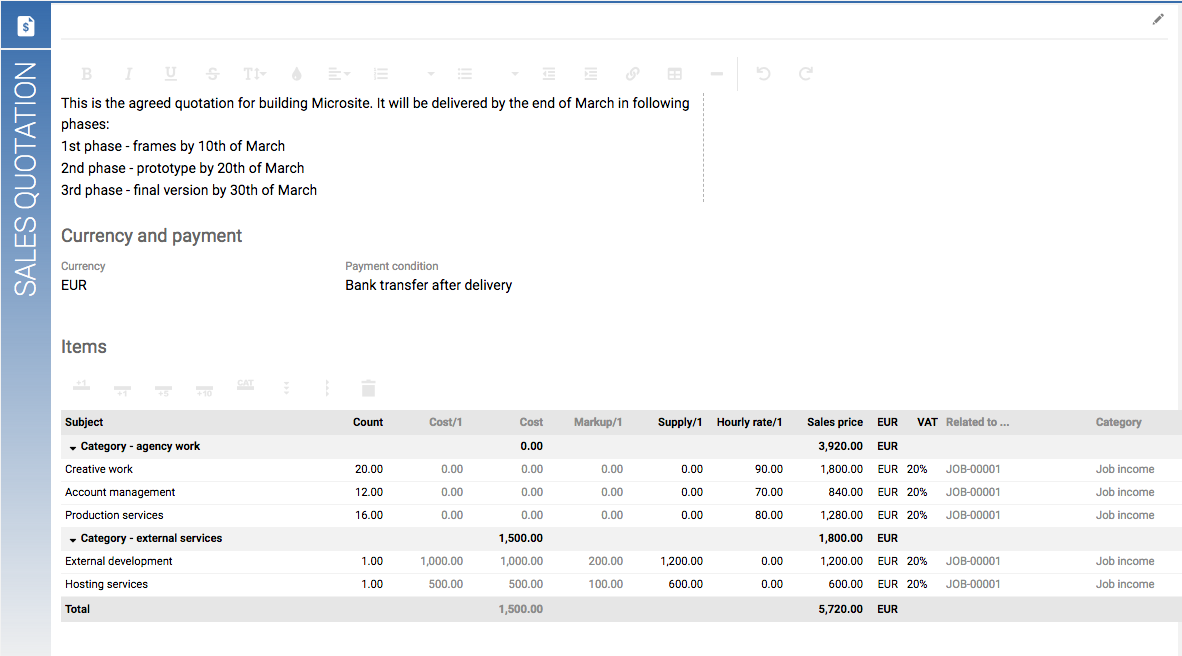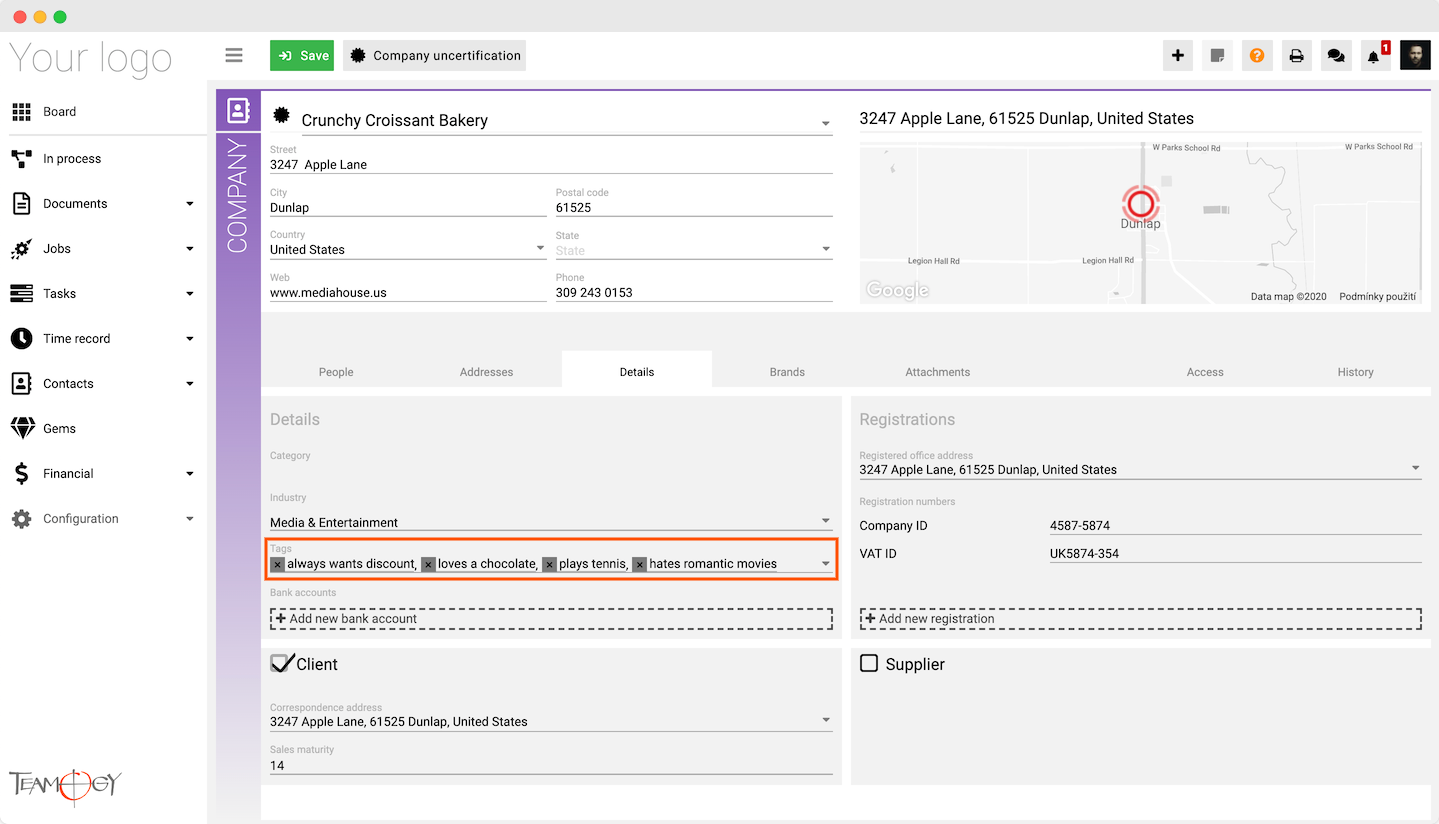How can Teamogy help you sell better to your clients?
It has happened to everyone – you send an estimate to a client and realize that the client does not like the proposed price.
Clients express this disagreement with the price in various ways. These methods vary from straightforward and harsher words such as “Well, you must be crazy” or a more cultured version, “This price doesn’t suit us at all” to almost unclear statements that aren’t understandable at first as to what the client means such as, “I don’t know if we want to implement the project at all.”
The key to success is to agree with the client and, ideally, to defend the price in full, not immediately reduce it. It is more important to understand what specific objection is behind what they are saying or how they feel.
There are seven basic reasons customers object to the “price.” When we identify which specific reason out of these seven it is, we have won. We can make the right counter-offer.
There is nothing worse than being frightened by the client’s dissatisfaction with the price and offering him a discount right away. There is nothing worse than being frightened by the client’s dissatisfaction with the price and offering him a discount right away. After all, the customer will wonder why we didn’t offer a lower price right away?
Seven reasons lead the client to the objection of “I do not like the price”:
- He’s just trying – he enjoys negotiating a price. He doesn’t really need another (lower) price and doesn’t insist on it.
- The discount is the goal – often, the client needs to get a price discount from the company because he feels it is his task (a part of the benefit for the person negotiating the discount may even be the process of trying to obtain the discount).
- He knows/thinks that the same thing/service can be procured cheaper elsewhere
- He does not understand the price, and he doesn’t want to be fooled
- They do not fully understand/trust the benefits of the service/product at the given price
- He does not trust a specific trader or company
- He does not have enough money to place the order
For the reasons that were set out above, it is clear that the business response should not be the same for every one of those reasons. That is why it is so important to know the true reason behind the objection.
To determine the correct reason, we need to ask smart questions and then listen carefully to the answers.
It is also extremely important not to assume that we already know the answer because we can be wrong!
So what are the indications of these individual points and how can you react correctly?
Our potential questions are actually very similar initially for all of the reasons for the objection. The thing to do is to first show that we have acknowledged that there is a disagreement with the price. Then, we need to get the customer to specify the reason for the dissatisfaction with specific questions.
Examples of questions:
- I see that you don’t like the price so much, what exactly doesn’t suit you?
- You say that the price is too high, what specific part of the budget don’t you like so much?
- I feel like you don’t like the price. Is there a specific part of the budget that we should go through? Or do you want to go through the entire budget?
Reason 1.
He’s just trying – he enjoys negotiating a price. He doesn’t really need another (lower) price
Indications:
- The client cannot specify what he does not like despite our questions.
- The client does not really want to do anything
Negotiations conclusion:
- Let’s show the client that our budget is well researched and based on real experience and of how much time each job takes. The way to a discount is through leaving out of some activities, implementation by a junior professional, or a reduction in quality (for example, less expensive product). If the client is just trying for the sake of trying, none of these compromises will satisfy him.
- The budget created by Teamogy through the evaluation of similar previously concluded Jobs (with an overview of real-time requirements) is a powerful and reliable source for dealing with this type of client.
Reason 2.
The discount is the goal. Often, the client needs to get a price discount from the company because he feels it is his task
Indications:
-
In the client’s view, there is no better expert on the subject of the order than himself.
-
The client uses words such as, “I just need a discount.”
Negotiations conclusion:
-
If we determine that the discount must truly be given because shopping with a discount is the principle of our client, we must either directly contact the buyer or call another meeting with experts to negotiate what to limit in the implementation process in order to allow for a “discount” to be given.
-
At this point, in Teamogy, it is good to make a note of the client’s details (“needs a discount”) in the Contacts area in the Details/”Tags” section.
Reason 3.
He knows/thinks that the same thing/service can be procured cheaper elsewhere.
Indications:
-
Specifically, the client states that he thinks or knows that the same thing can be bought cheaper elsewhere.
Negotiations conclusion:
-
If it is only a client’s presumption, we can, as in point #1, go through the budget and eliminate certain aspects of the job to lower the cost.
-
If another company really can deliver the product/service cheaper, it is important to consider whether or not it makes sense to sell the client a partial order – even at a loss- to merely keep the competition from getting the order. We must determine if the client is generally profitable for us, or if we should forgo loss-producing orders because it financially does not make sense to us.
Reason 4.
The client does not understand the price, and he doesn’t want to be fooled
Indications:
-
The client answers indecisively or evasively. He might even say, “I just don’t understand the price”, “Would you check the price for me one more time”,… etc.
Negotiations conclusion:
-
In this case, it is important to find out why the client does not understand the price – whether he is just a stranger to our way of budgeting, whether he does not understand the reason something is included under a specific activity, or maybe he does not understand the project’s time demands.
-
When we explain the budget, we must continuously confirm that the client understood every step as we go through it.
Reason 5.
The client does not fully understand/trust the benefits of the service/product at the given price
Indications:
- For example, the client may as something like, “And will it really works?”, “Will this money really bring this result?“, or “Shouldn’t we invest the money in something else?”
- We sense doubts and fears from the client that the investment will not return the expected result or product.
Negotiations conclusion:
- We will acknowledge that we hear the client’s concerns and will be happy to provide him with information that should alleviate or eliminate his concerns.
- The correct argument can be, for example, in the form of case studies. Provide the results of similar activities or products.
- In Teamogy, we can have various case studies stored in Gems with a correctly set category and tags. They are thus quickly and easily accessible to members of the agency’s team that have been granted access rights
Reason 6.
The client does not trust a specific trader or company – he does not want to give money to this particular supplier
Indications:
- If the client is distrustful or uncomfortable for this reason, he may use words like “Do you have any experience with this at all?”, “Have you already done a project like this as a company”, or “Can you provide me with some references?”
Negotiations conclusion:
- In this case, it is good to find out whether the distrust is more towards a person or the company as a whole.
- The agency’s credentials, the profile, and the experience of the agency’s implementation team should be used to eliminate any concerns.
- Agency credentials as well as profiles of individual team members can be stored in the Gems with a correctly set category and tags. They are thus quickly and easily accessible to members of the agency’s team that have been granted access rights
Reason 7.
He does not have enough money to place the order.
Indications:
-
The client usually does not have a specific area that bothers him in the budget, but he still asks if the price must really be so expensive and whether or not the project can be done cheaper.
Negotiations conclusion:
-
Determine this diplomatically to confirm that the client does not have dedicated money or cannot make that much investment in this project. (Definitely do not say, “…so the problem is that you don’t have enough money.”)
-
If the client confirms the above, take another look for an alternate solution to bring the cost closer to the client’s budget.
And the “mantra” in the end is
never give a discount “for free”!

NAĎA ŠOLCOVÁ
Naďa is a member of the management team for AD-IN-ONE Europe. She specializes in coaching and marketing communication. She is a certified coach of ICF and ČAKO and the holder of the Direct Marketer of the Year award bestowed by the ADMEZ Association. She has been involved in marketing for over twenty-five years and coaching for the last seven years. In her free time, she enjoys sailing and is an active fan of modern gymnastics, which she participated in during her youth.
You might be interested in
Create A Task From Job
Create A Task From Job1. In the left navigation menu unroll Jobs. 2. Click on Job Statuses or Job List and choose existing Job. 3. Click on Task.4. Complete All Details. Mandatory Details are red underlined (can be different by company’s settings). Start date the...
Capacity Plan – Layout
Capacity Plan - LayoutCapacity Plan is a visual overview of all Tasks assign to a person, team or the entire company. Action bar includes following options: 1. Choosing the person or team here you can choose the person or team. All Tasks for the person/team are...
About Task List
About Task ListTask List is an overview of all created Tasks, which can be sorted and filtered by various criteria. The most important criteria is the author of the Task or the responsible person for the Task. You can sort by: Assigned to me or participating in the...
About Tasks
About TasksManaging Tasks is a must-have for efficient time management. Release your tension and stress – have everything effectively planned, including deadlines. You can take your mind off everything that is already planned within Tasks. Enjoy a single place where...
2. Company documents in one place
2. Company documents in one placeSeveral different document types like briefs, meeting reports, quotations, contracts, various protocols, etc., are created in each company every day. Proper maintenance of documents includes creation, content, and design can save a lot...
Create A Task From View
Create A Task From View1. In the left navigation menu unroll Tasks. 2. Click on Capacity plan/ Task schedule / Task statuses / Task list - new task can be created from any one of those views. 3. Click on New Task.4. Complete All Details. Mandatory Details are red...
Capacity Plan – How It Works
Capacity Plan - How It WorksFirstly, start our manual by creating a new task. Here is a link on how to create new task. On the screen below you can see the default situation after a task creation. Let’s call these pieces of a chart, which are orange now, as a bead....
New Meeting Category
New Meeting CategoryYou, as intern Teamogy admin, could add more Meeting Category. How to do add more Meeting Category? 1. In the left navigation menu unroll Configuration. 2. Click on Register. 3. Use Breadcrumb Ownership and choose Shared. 4. Use Breadcrumb...
New Document Category
New Document CategoryYou, as intern Teamogy admin, could add more Document Category. How to do add more Document category? 1. In the left navigation menu unroll Configuration. 2. Click on Register. 3. Use Breadcrumb Ownership and choose Shared. 4. Use Breadcrumb...
Don’t miss interesting articles and tips
If you want to be among the first, please enter your e-mail. We will always try to send quality and interesting content for you.



